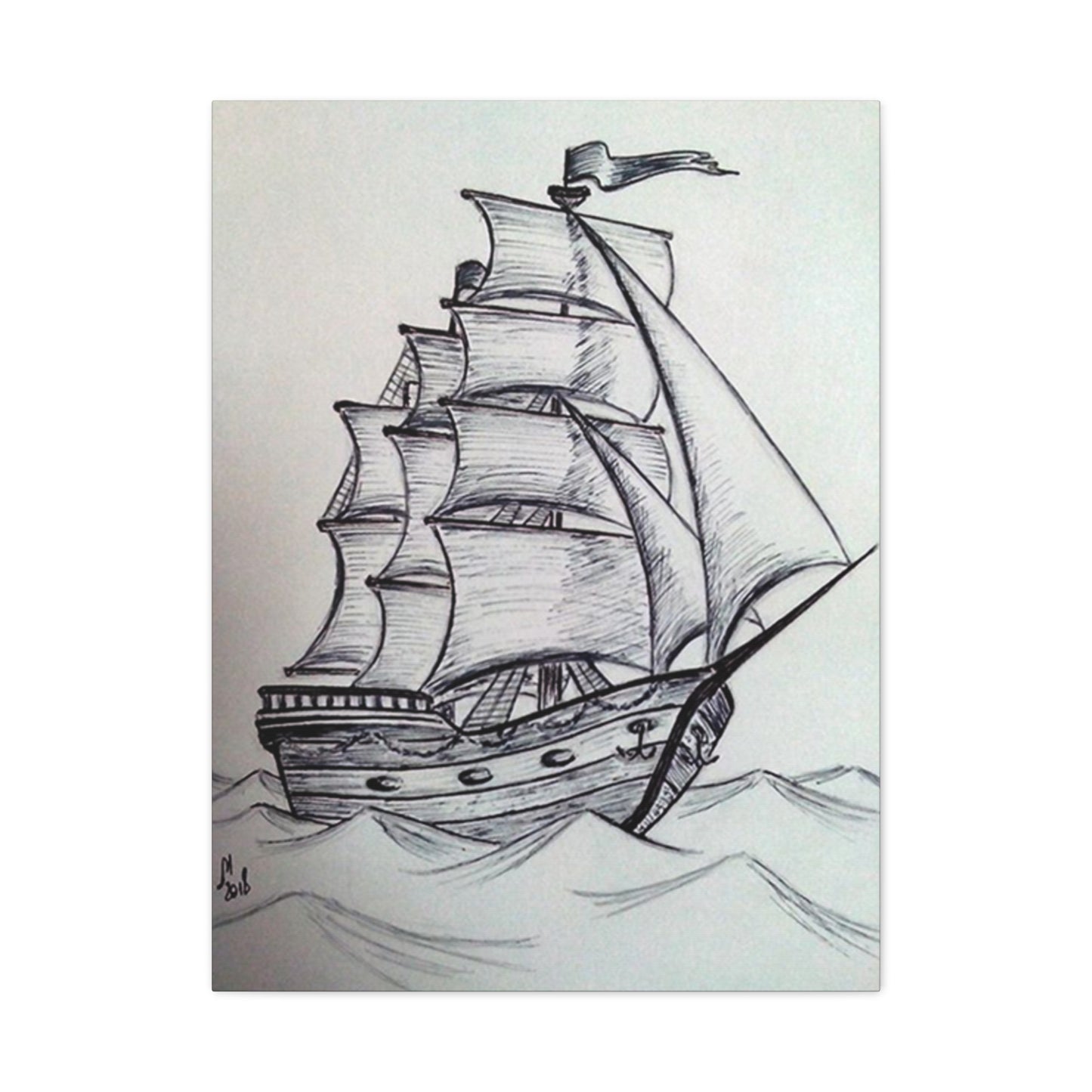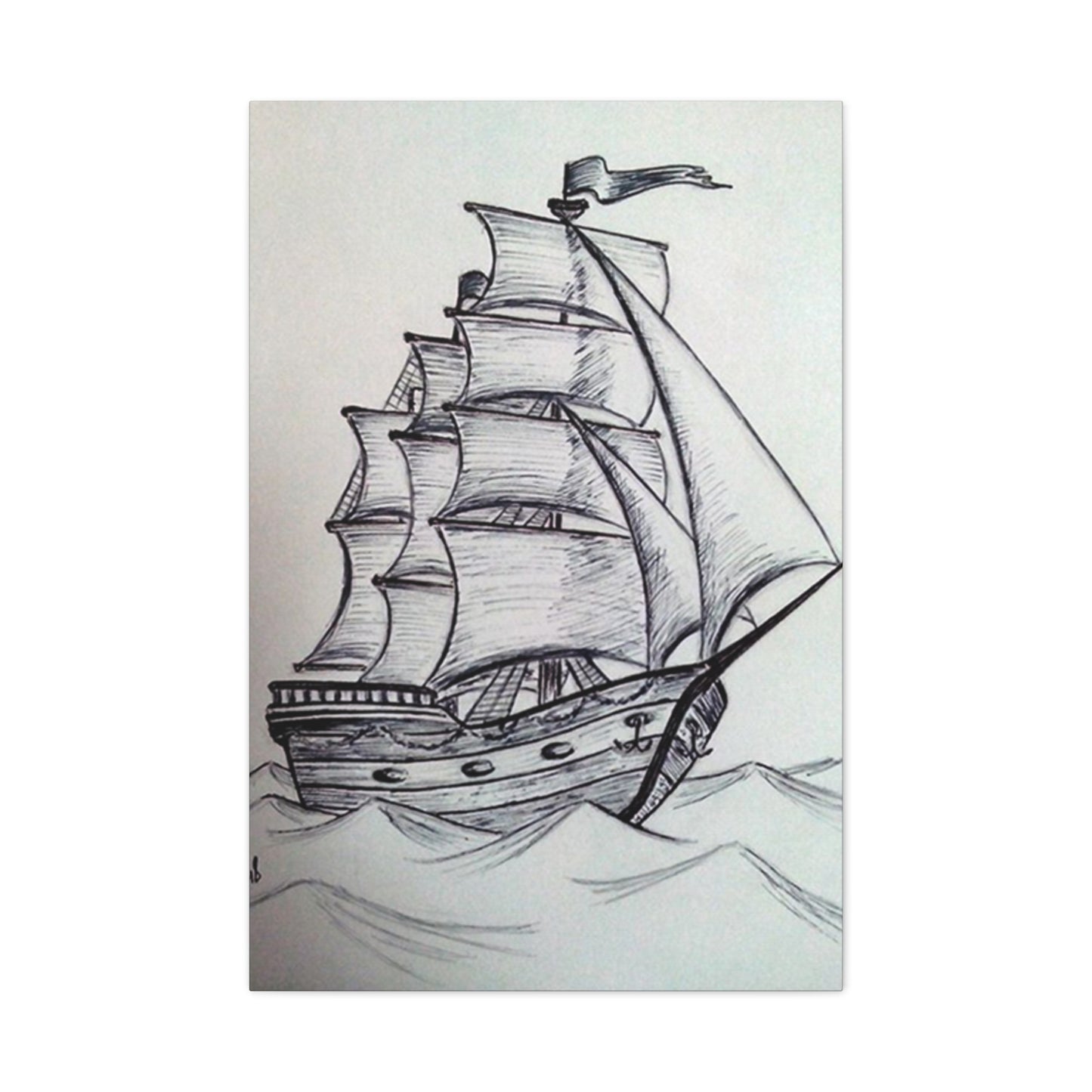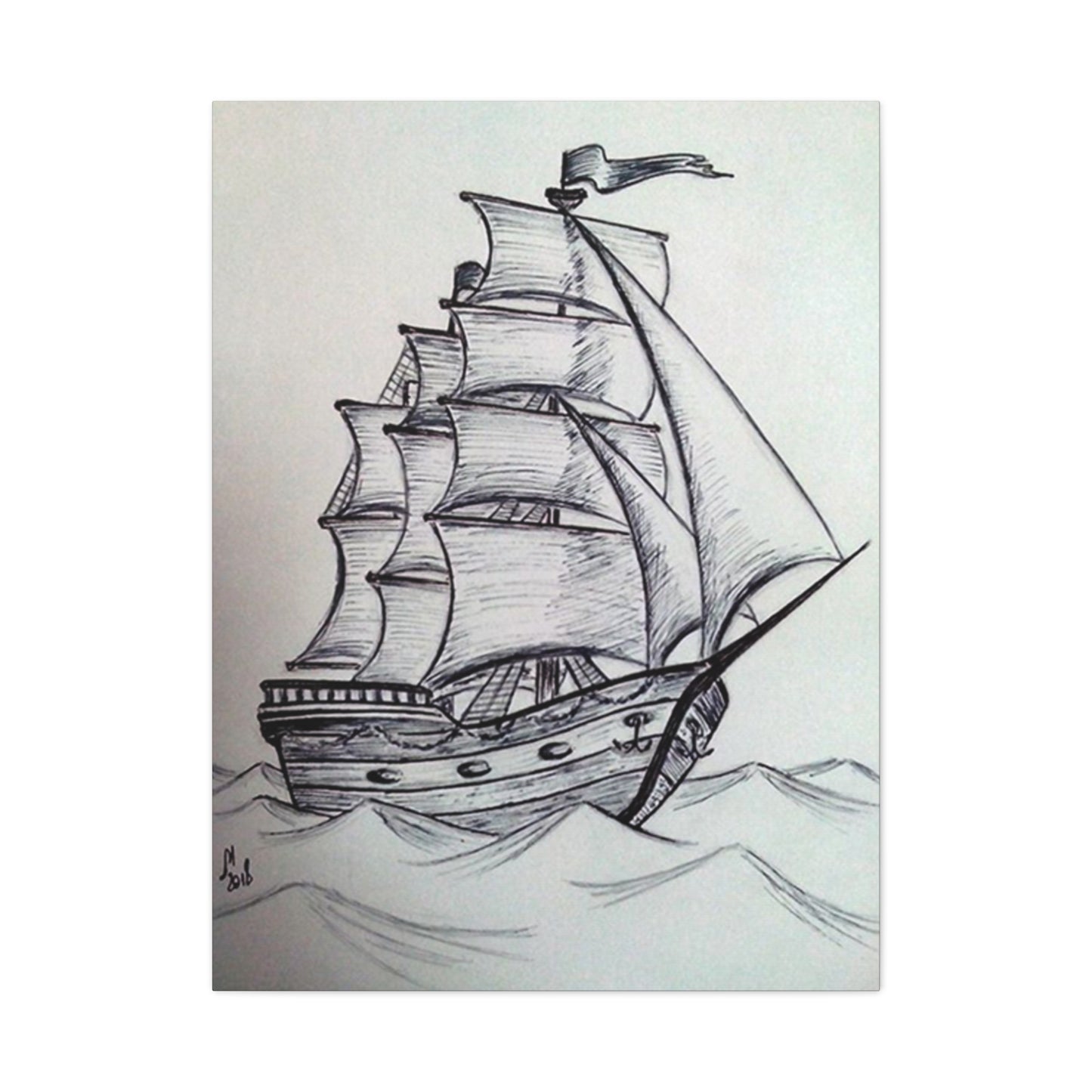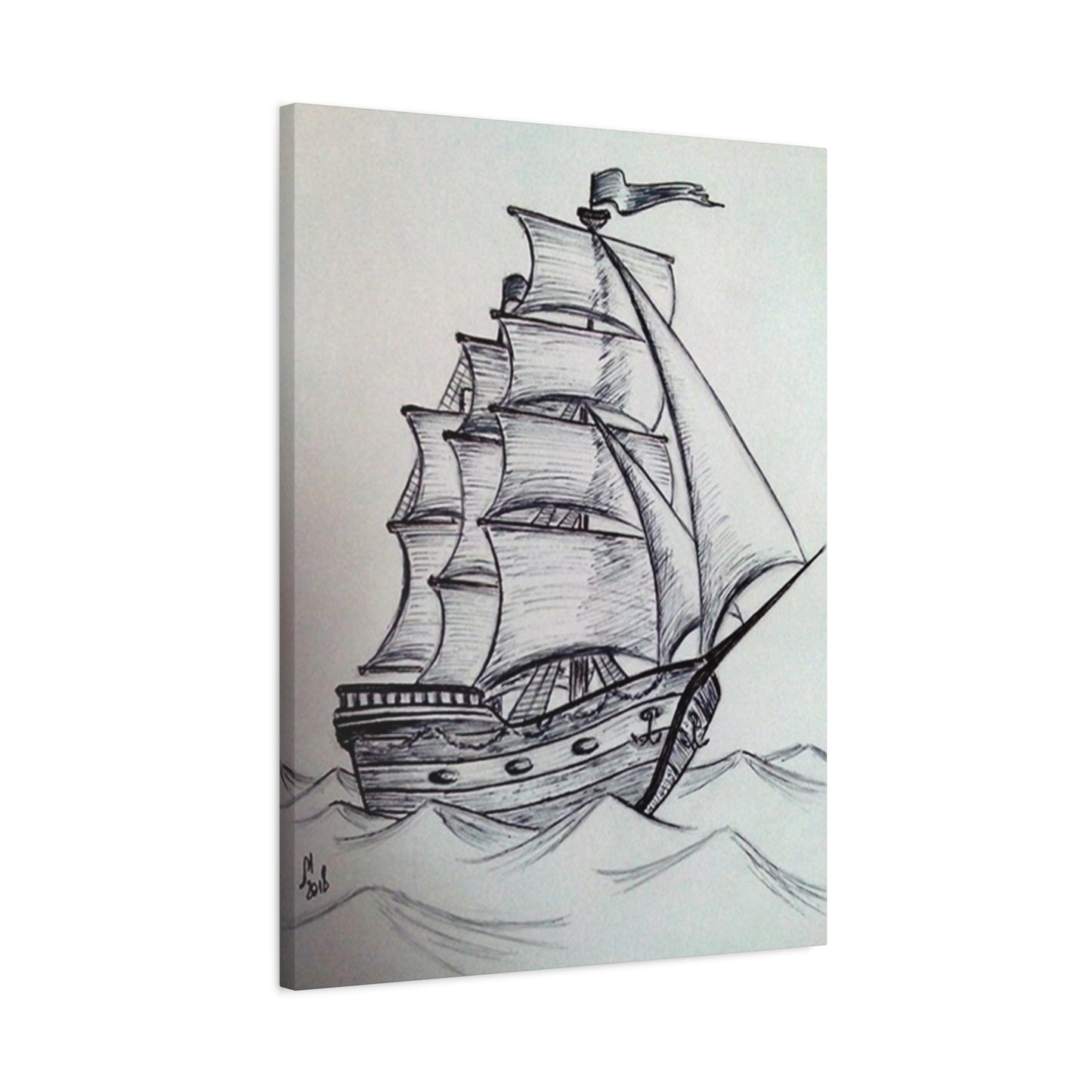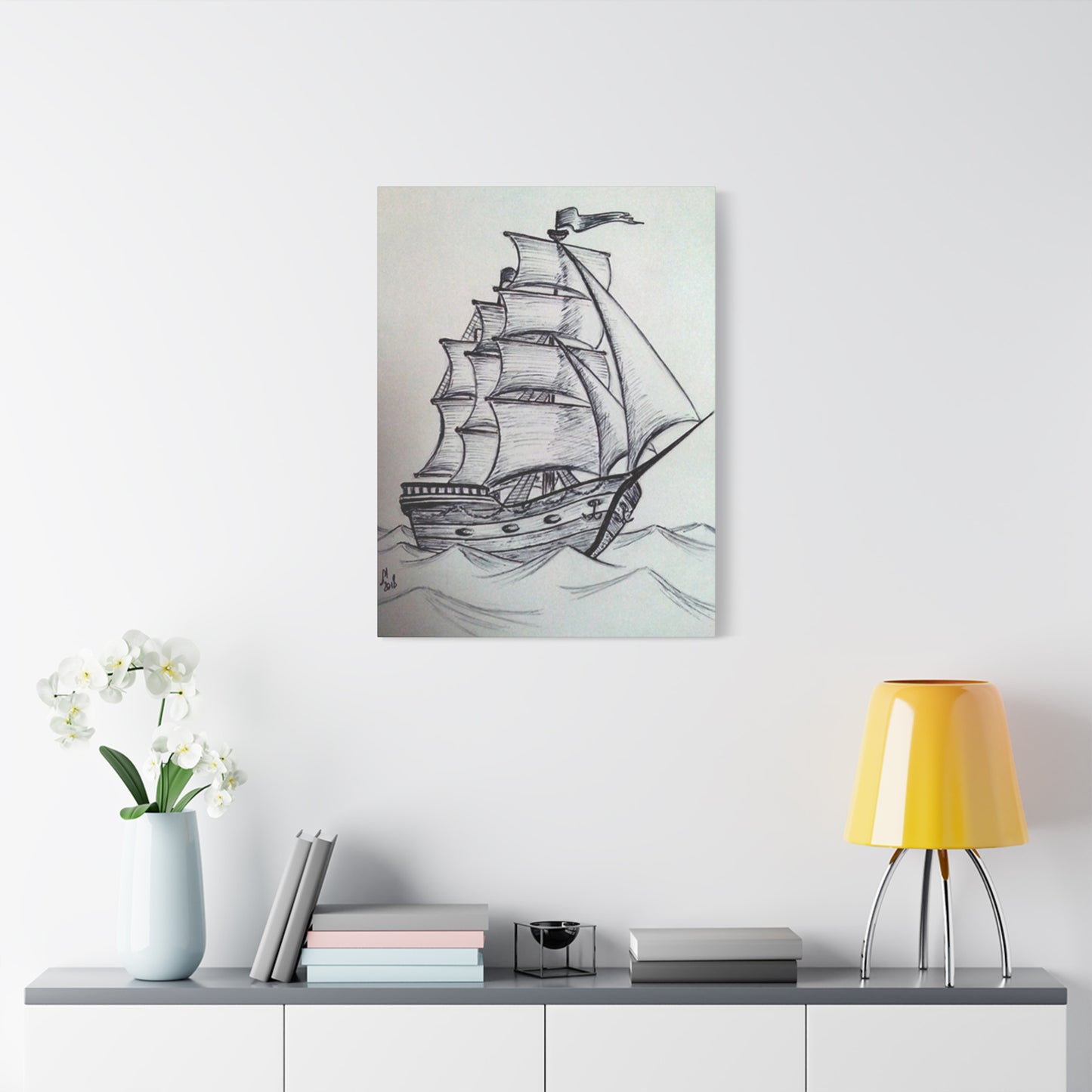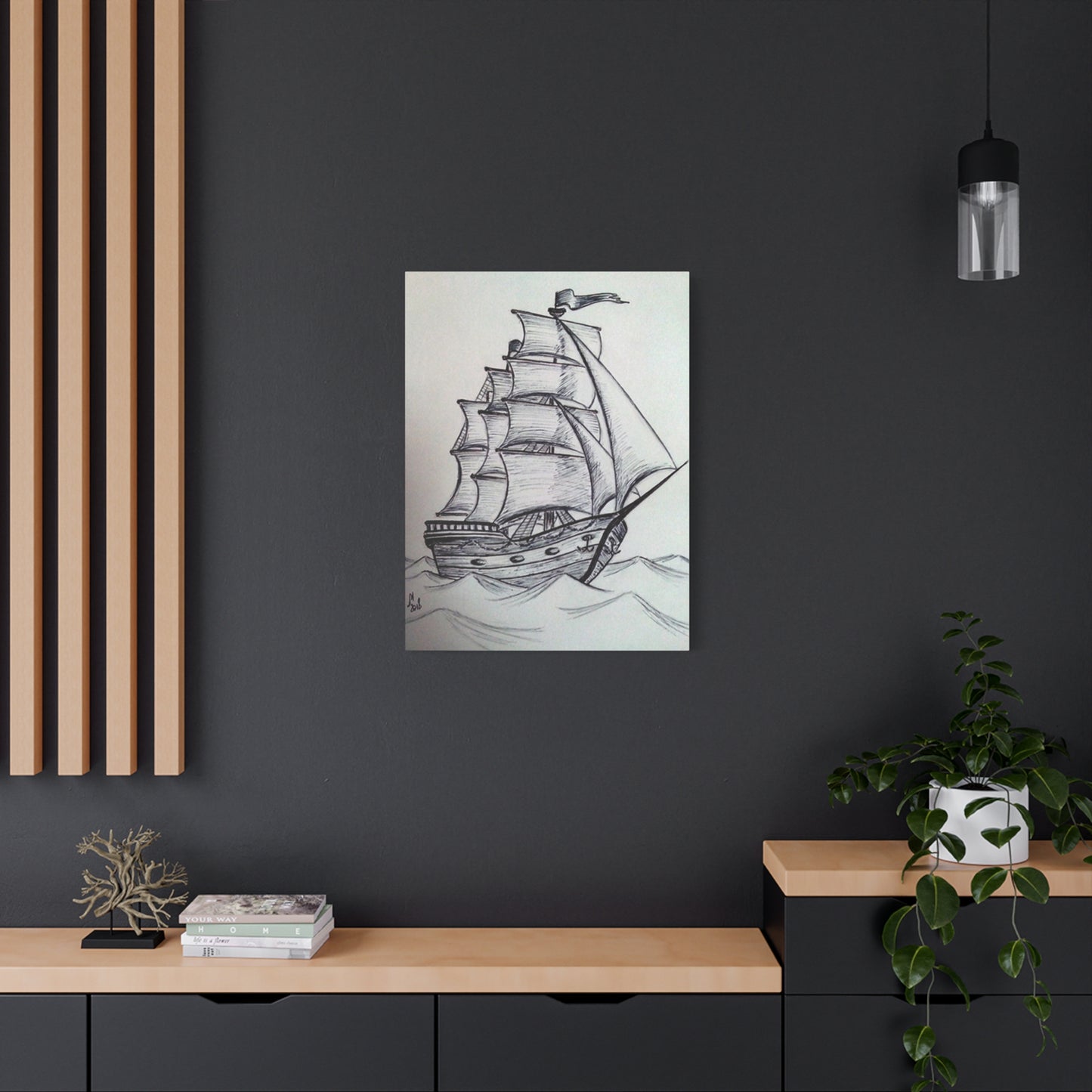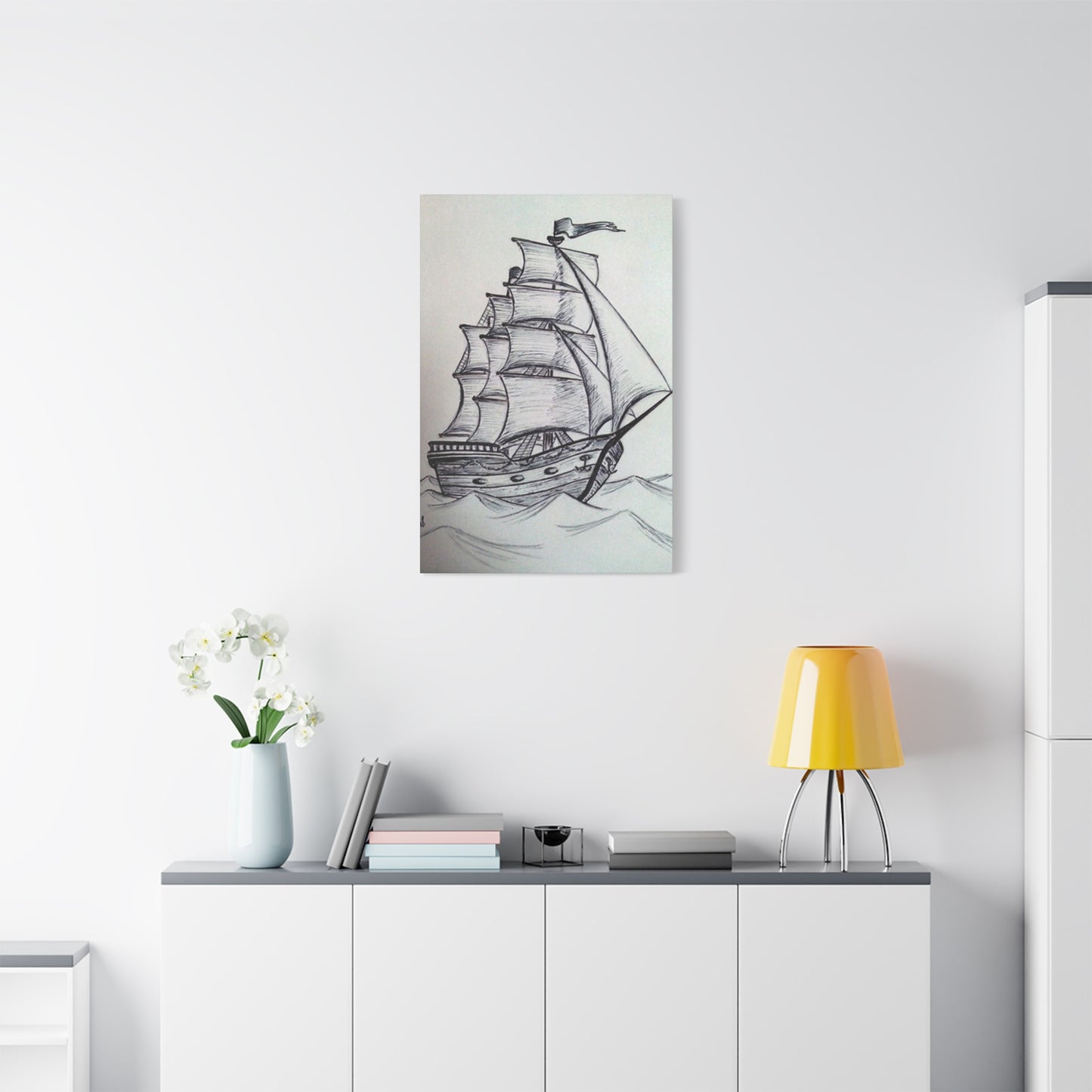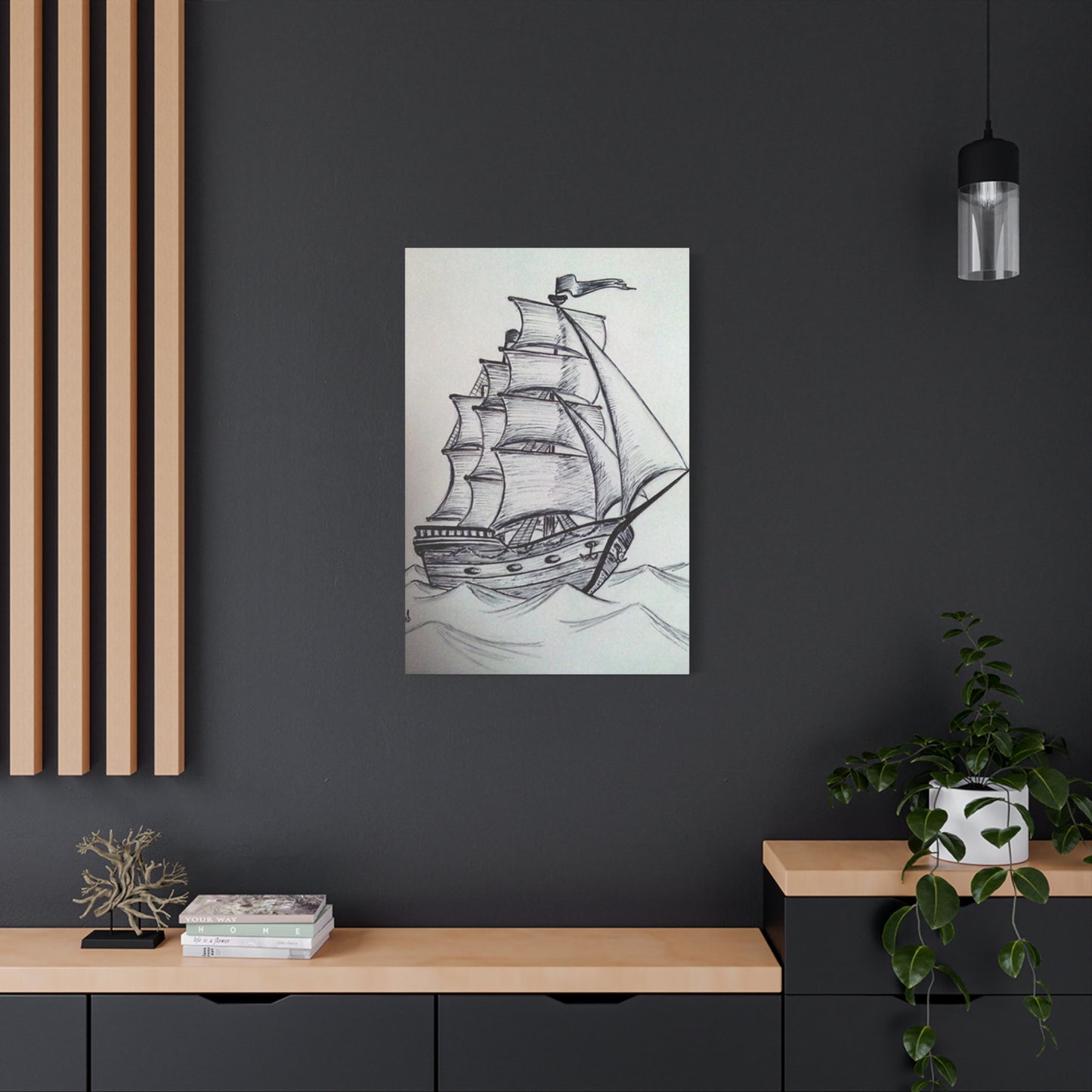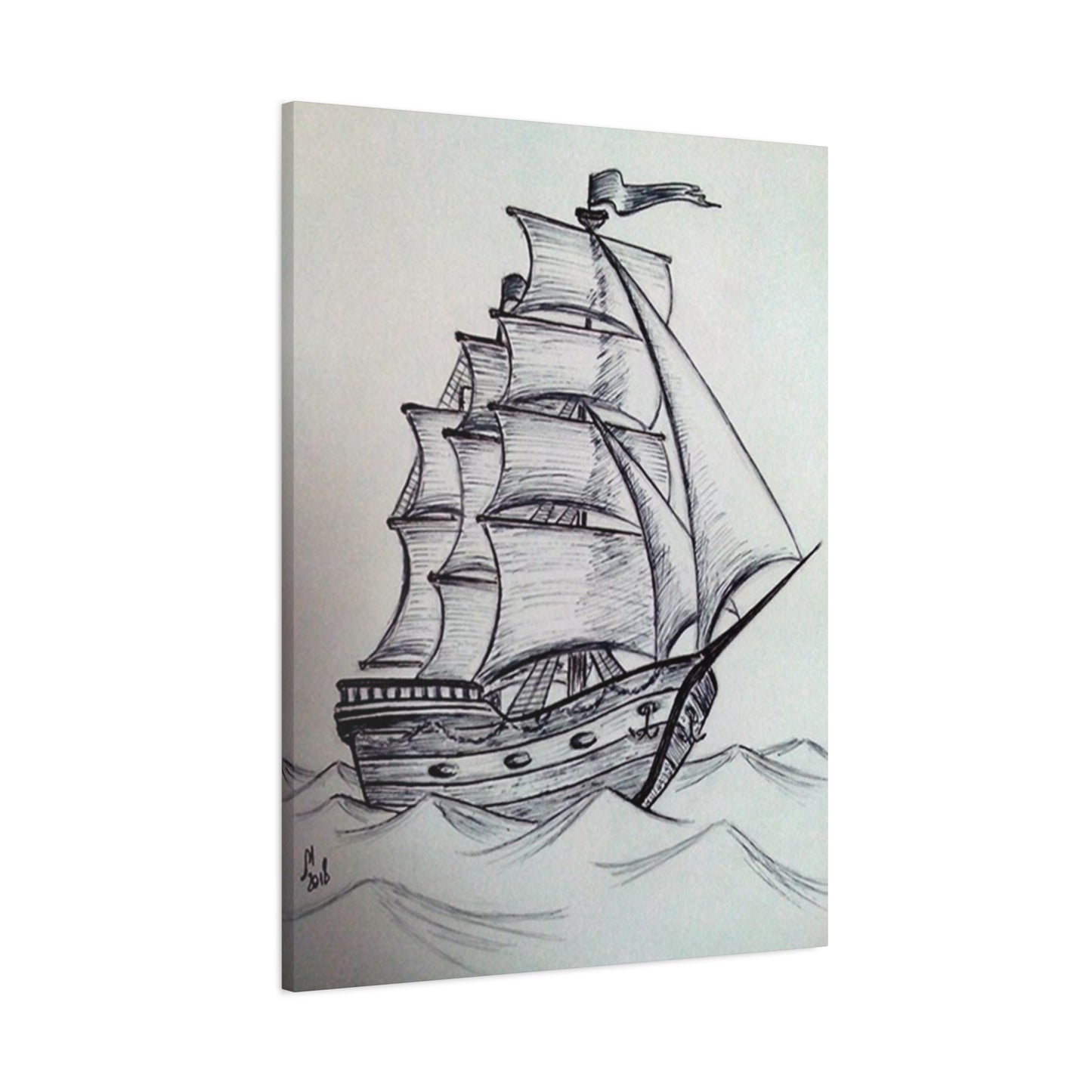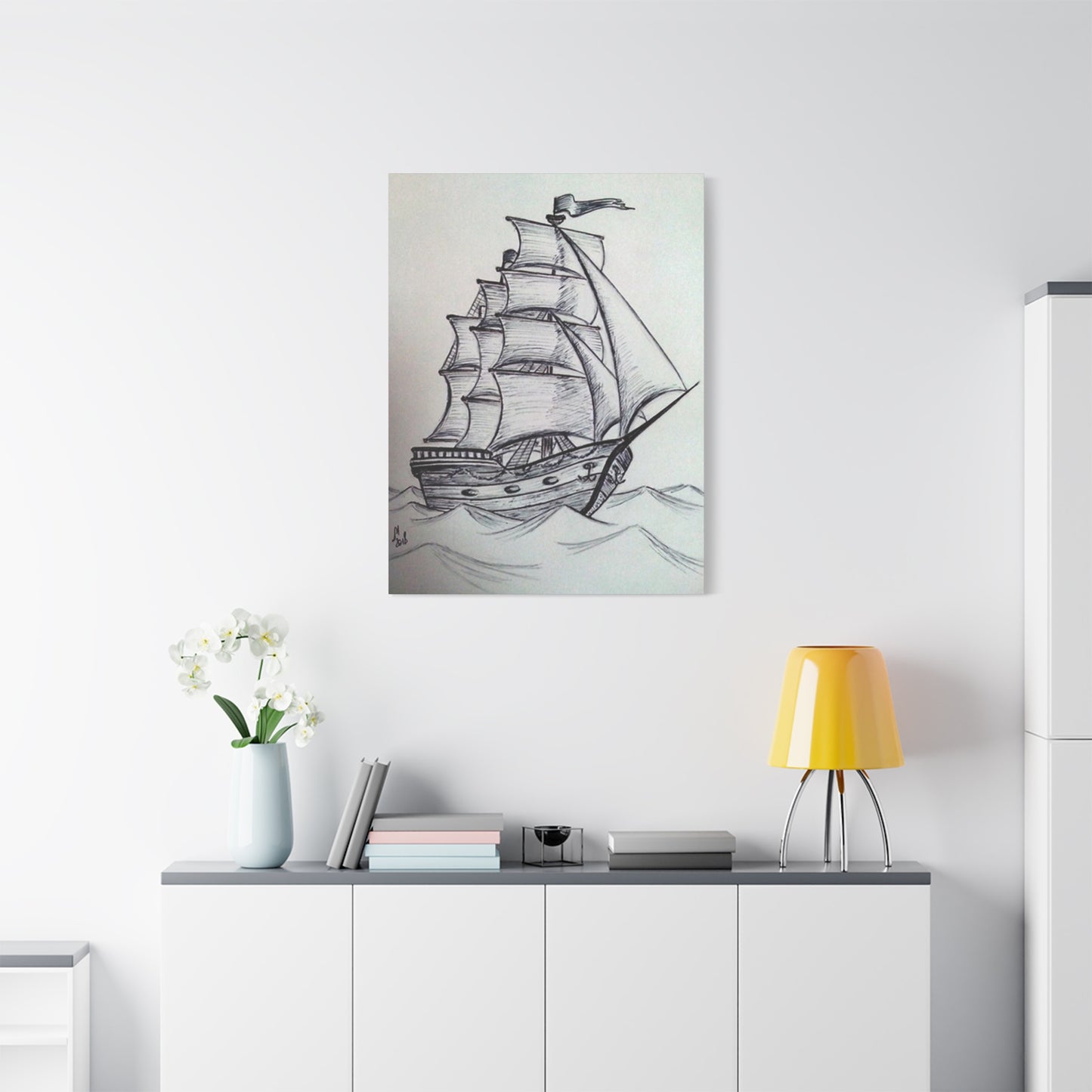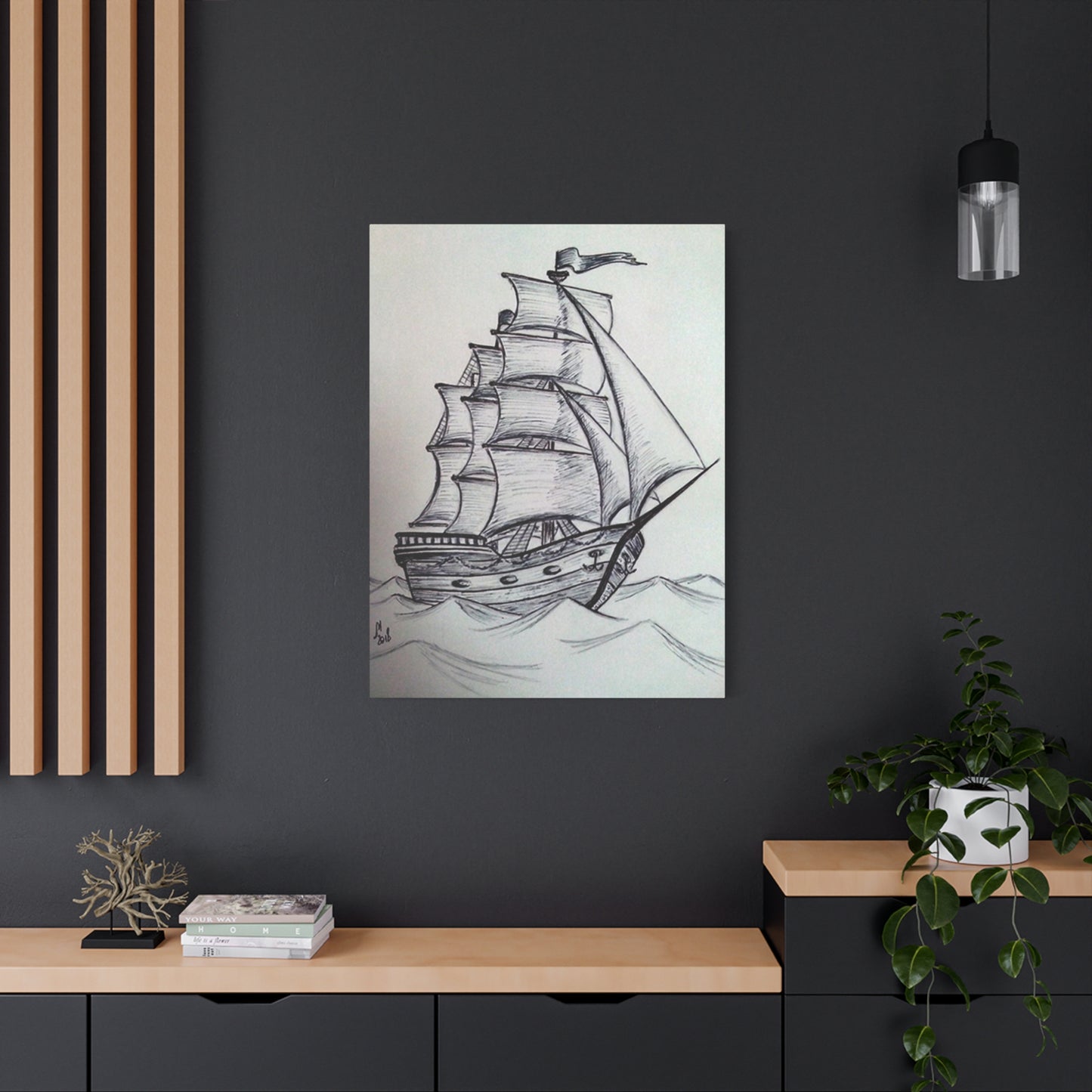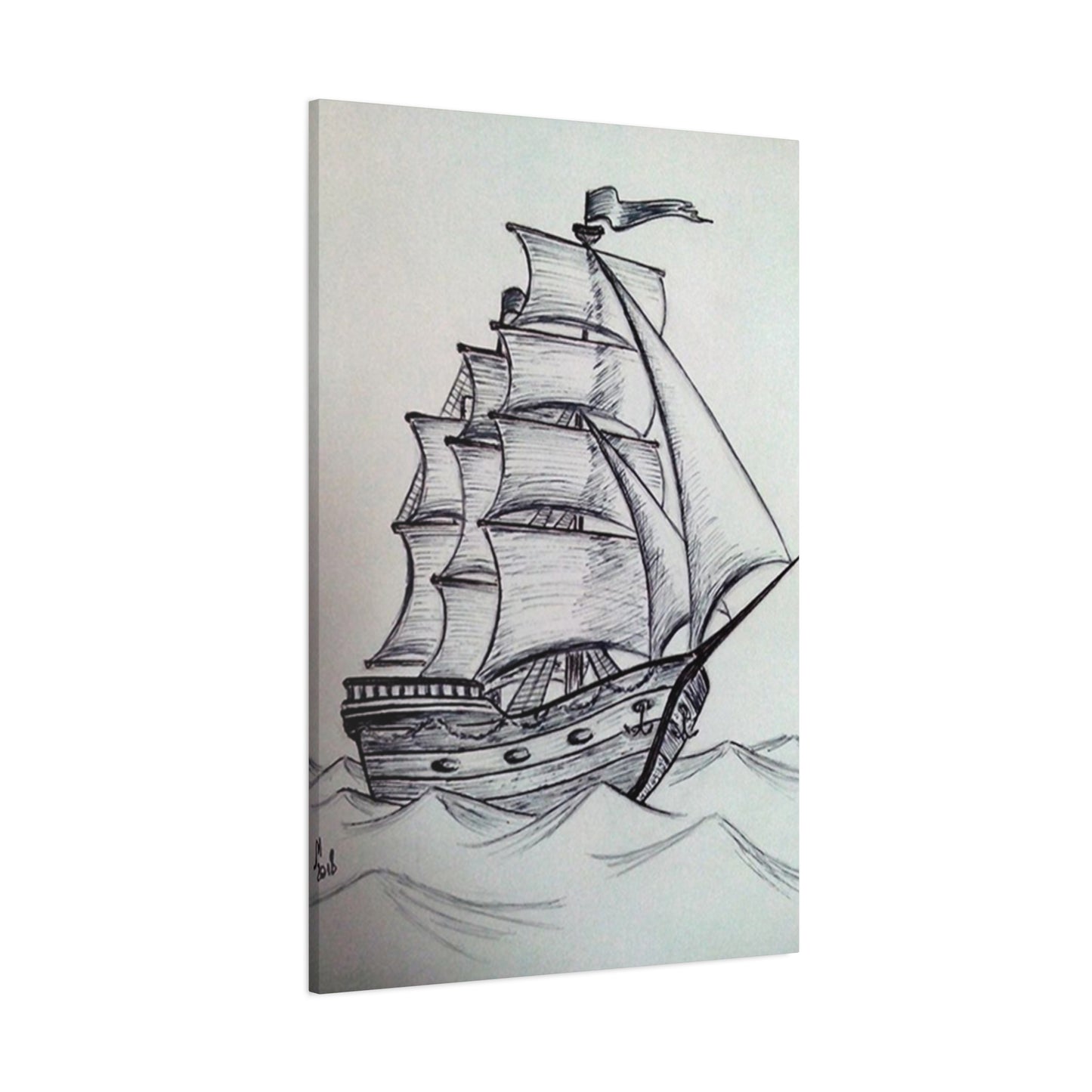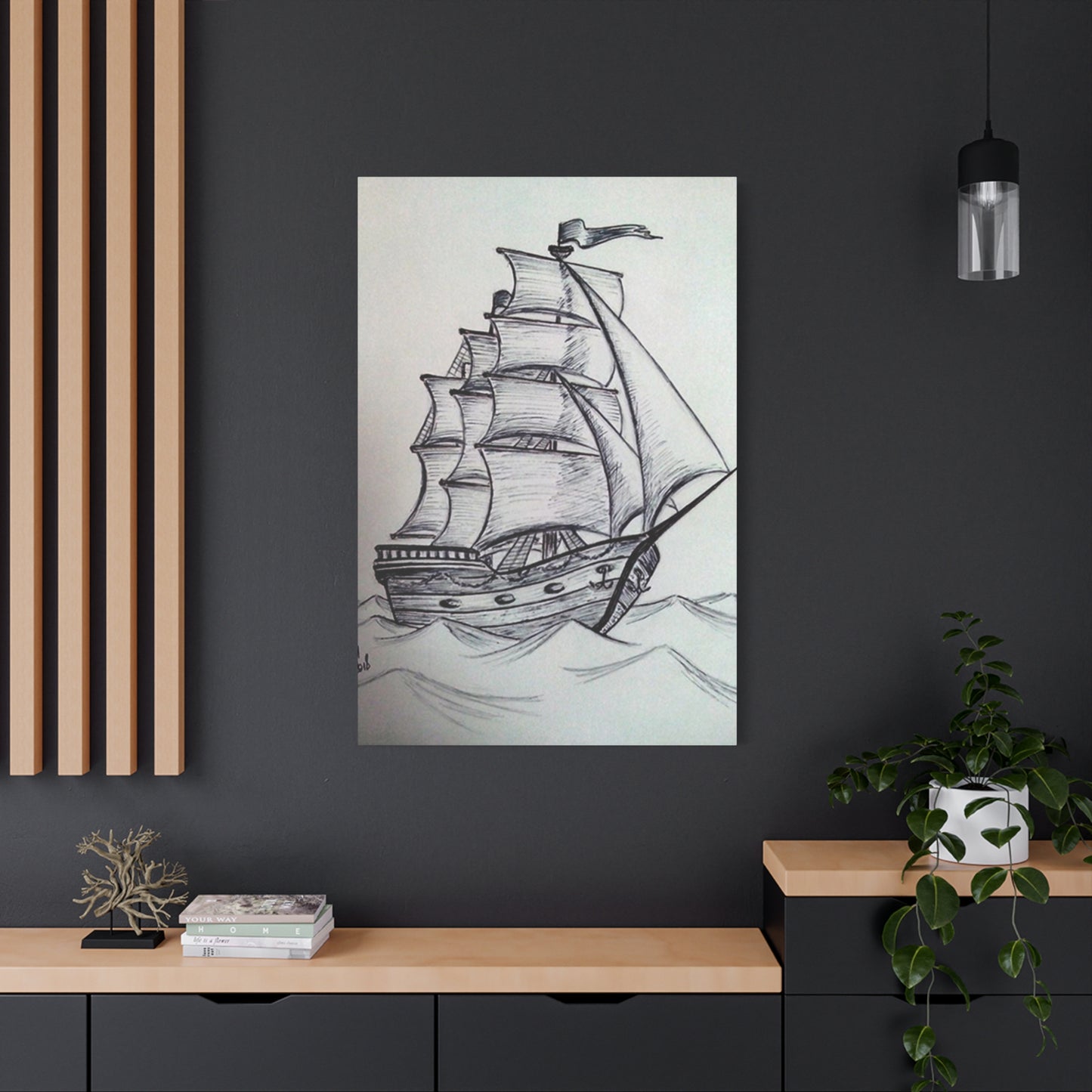Nautical Ship Sailing Drawing Wall Art: A Complete Home Decor Resource
The allure of maritime imagery has captivated human imagination for centuries, transcending generations and cultural boundaries. Ship sailing drawing wall art represents a sophisticated fusion of artistic expression and decorative elegance that brings the romance of the ocean into our living spaces. These remarkable pieces capture the essence of seafaring adventure, combining intricate line work with compelling visual narratives that speak to our deepest desires for exploration and discovery. When we consider the lasting appeal of nautical imagery in contemporary interior design, we recognize that these artworks offer far more than mere decoration; they serve as windows into our collective fascination with the sea and the vessels that traverse its vast horizons.
The beauty of ship sailing drawings lies in their extraordinary ability to evoke emotion and movement through artistic representation. Whether rendered in bold charcoal strokes, delicate pen lines, or sophisticated mixed media techniques, these artworks capture the dynamic relationship between humanity and the natural world. The careful attention to detail in ship sailing wall art demonstrates the artist's commitment to authenticity, from the intricate rigging of traditional sailing vessels to the billowing sails that seem to capture actual wind. These visual elements work together to create compositions that feel alive and energetic, inviting viewers to embark on imaginative journeys across distant seas and unknown territories.
The timeless quality of ship sailing drawing wall art stems from its deep roots in artistic tradition. Maritime art has flourished for generations, inspired by the real experiences of sailors, explorers, and adventurers who understood the profound connection between humans and the ocean. This historical foundation gives contemporary ship drawings a sense of authenticity and gravitas that purely modern designs may struggle to achieve. When you display ship sailing wall art in your home, you're not simply hanging a picture; you're connecting to a rich artistic heritage that spans centuries and continents. This enduring appeal ensures that these pieces remain relevant and beautiful regardless of shifting design trends or fleeting aesthetic preferences.
The versatility of ship sailing drawing wall art makes it an exceptional choice for various design contexts and personal preferences. Some pieces emphasize photorealistic detail, painstakingly rendering every aspect of historical vessels with museum-quality precision. Others embrace minimalist approaches, using sparse lines and negative space to suggest the essence of a ship without explicit detail. Still others explore abstract interpretations, deconstructing maritime imagery into their fundamental geometric components. This remarkable range of artistic approaches means that virtually any design aesthetic can incorporate ship sailing wall art, whether your taste tends toward traditional elegance, contemporary minimalism, or eclectic fusion styles. The flexibility of this art category makes it an ideal investment for homeowners seeking pieces that will remain meaningful and visually satisfying over many years.
How Nautical Wall Art Transforms Any Room
The transformative power of nautical wall art extends far beyond simple visual enhancement; these pieces fundamentally alter how we perceive and interact with our interior spaces. When carefully selected and thoughtfully placed, nautical artwork can shift the entire atmosphere of a room, creating an environment that feels cohesive, intentional, and personally meaningful. The psychological impact of maritime imagery influences our mood and mindset, often triggering associations with freedom, tranquility, and adventure. This emotional resonance explains why so many people are drawn to nautical wall art despite living far from coastal regions or major bodies of water. The ocean represents possibilities and expansiveness to the human psyche, and when we integrate maritime imagery into our domestic environments, we're essentially inviting these powerful associations into our daily lives.
The practical mechanics of how nautical wall art transforms spaces involve several interconnected design principles that work synergistically. First, these pieces often serve as powerful focal points that anchor room compositions and guide viewer attention. A well-positioned ship sailing drawing can immediately draw eyes to a specific wall, creating visual hierarchy and preventing the space from feeling scattered or disorganized. Second, nautical artwork typically introduces or reinforces specific color palettes that enhance overall design coherence. Blues, teals, whites, blacks, and warm neutrals work beautifully with maritime themes, creating color schemes that feel both sophisticated and approachable. Third, the subject matter of nautical pieces often creates thematic consistency throughout rooms, allowing complementary elements like throw pillows, area rugs, or accent furniture to feel intentional rather than random. This thematic unity is crucial for achieving spaces that feel thoughtfully designed rather than haphazardly decorated.
Beyond aesthetic considerations, nautical wall art influences how we feel when inhabiting spaces. Research in environmental psychology demonstrates that our surroundings profoundly affect our emotional states and cognitive function. Spaces featuring maritime imagery and ocean-inspired themes tend to feel more relaxing and restorative than those with chaotic or disconnected design elements. The presence of ship sailing drawing wall art creates visual interest that satisfies our psychological need for stimulation without overwhelming our senses through excessive complexity or discordant colors. Many people find that spaces decorated with nautical art feel more peaceful and grounding, making them ideal for bedrooms, bathrooms, and meditation areas. Additionally, these pieces often inspire positive emotions associated with optimism, adventure, and possibility, making them excellent choices for home offices, creative spaces, and areas where we want to cultivate motivation and inspiration.
The transformative potential of nautical wall art also depends significantly on how these pieces relate to surrounding décor elements. A single ship sailing drawing might feel somewhat disconnected if placed in a room filled with contemporary minimalist furniture and industrial lighting fixtures. However, when multiple nautical elements work together harmoniously—perhaps combining ship art with coastal-themed textiles, natural wood accents, and appropriate lighting—the space transforms into a cohesive environment that tells a compelling visual story. This layering approach allows nautical wall art to serve as both a standalone artistic statement and part of a larger decorative ecosystem. The most successfully transformed spaces are often those where nautical elements feel integrated rather than imposed, where ship sailing drawings work collaboratively with other design choices to create unified, inviting environments that reflect their inhabitants' personalities and values.
The Symbolism Behind Ship and Sailboat Drawings
Ship and sailboat drawings carry profound symbolic weight that extends far beyond their literal representation of historical vessels and maritime activities. Throughout human history and across diverse cultures, ships have symbolized journey, transformation, adventure, and the human desire to transcend limitations and explore unknown territories. When artists create ship and sailboat drawings, they're not simply depicting physical objects; they're engaging with complex symbolic systems that tap into universal human experiences and aspirations. The sailboat, in particular, represents human agency and intentionality—the ability to harness natural forces through skill and determination to achieve desired destinations. This symbolic dimension gives ship and sailboat drawings emotional resonance that casual observers might not consciously recognize but certainly feel when viewing these artworks.
The symbolism of ships in artistic tradition draws heavily from centuries of maritime history and cultural mythology. Ships have long been recognized as symbols of commerce, exploration, and the expansion of human knowledge and influence across the globe. Many classical and contemporary artworks featuring ships reference historical voyages of discovery, implicitly celebrating human curiosity and the drive to expand horizons. In nautical traditions, ships also symbolize safety, protection, and the successful navigation of life's challenges. A well-rendered sailing ship in artwork can suggest steadiness and reliability, offering viewers an implicit message about the possibility of navigating difficult circumstances with grace and capability. The specific characteristics of depicted ships—their size, condition, configuration, and placement within compositions—allow artists to convey nuanced symbolic meanings. A majestic, perfectly rendered sailing ship conveys different symbolic content than a weathered, listing vessel depicted struggling against tumultuous waves.
Sailboats specifically carry symbolic associations with freedom and the human spirit's boundless potential. Unlike powered vessels that rely on mechanical force, sailboats depend on their operators' understanding of natural systems and their ability to work collaboratively with environmental conditions. This characteristic makes sailboats particularly powerful symbols of harmony between human intention and natural forces. When artists depict sailboats with full sails billowing gloriously, they're creating visual metaphors for human potential unleashed and dreams in active pursuit. Conversely, sailboats shown at rest in calm waters might symbolize peace, contemplation, and the restoration of equilibrium. These symbolic associations explain why sailboat imagery remains so universally compelling; sailboats function as visual metaphors for fundamental human experiences and aspirations that transcend geographical, cultural, and temporal boundaries.
The symbolic power of ship and sailboat drawings makes these artworks particularly meaningful for specific viewers and contexts. Travelers, explorers, and adventure enthusiasts are naturally drawn to ship drawings because these pieces resonate with their personal values and lived experiences. Similarly, individuals who value independence, self-determination, and personal growth often find ship and sailboat drawings deeply meaningful because these symbols align with their self-conception and aspirational identity. People navigating significant life transitions frequently discover that ship drawings feel especially resonant, as the symbolism of journey and transformation mirrors their own experiences. The capacity of ship and sailboat drawings to operate on both literal and symbolic levels makes them more emotionally impactful than many other artistic subjects. This dual functionality contributes to their remarkable longevity in artistic traditions and their continued relevance in contemporary interior design. Understanding the symbolic dimensions of these artworks allows collectors and enthusiasts to select pieces that resonate with their personal values and circumstances, creating deeply meaningful decorative choices.
Minimalist Ship Line Art for Modern Interiors
Minimalist ship line art represents a contemporary artistic approach that strips maritime imagery down to its essential visual elements, creating compositions of remarkable elegance and sophistication. This artistic style emerged from broader minimalist movements that questioned the necessity of decorative excess and celebrated the power of restraint and simplicity. In minimalist ship line art, the focus shifts from elaborate detail and photorealistic rendering toward the pure expression of form and essence. Artists working in this style use minimal lines, often rendered in single colors or simple two-color combinations, to suggest the presence of ships and maritime themes without explicitly depicting every structural element. This approach creates visual interest through clever line placement, negative space manipulation, and the viewer's natural inclination to complete shapes and forms that are only partially indicated. The result is artwork that feels modern, sophisticated, and intellectually engaging while maintaining clear connections to nautical traditions.
The aesthetic appeal of minimalist ship line art derives from its elegant simplicity and visual clarity. Unlike detailed realistic renderings that demand significant wall space and careful color coordination with surrounding décor, minimalist pieces work beautifully in various contexts and design schemes. These artworks function exceptionally well in contemporary minimalist interiors where clean lines, neutral palettes, and intentional negative space define the overall design language. A minimalist sailing ship rendered in elegant black lines on white or neutral backgrounds creates a striking focal point that demands attention without overwhelming viewers with visual complexity. The restraint evident in minimalist ship line art appeals to audiences seeking sophisticated design solutions that feel purposeful and intentional. These pieces avoid the decorative excess that some might find distracting, instead creating calm, organized compositions that enhance rather than compete with their surrounding environments.
The practical advantages of incorporating minimalist ship line art into modern interiors extend beyond pure aesthetics. These pieces typically require less visual weight and presence than elaborate realistic renderings, making them ideal for smaller spaces, apartments, and rooms where large bold artworks might feel overwhelming. The neutral color palettes common in minimalist work allow these pieces to integrate seamlessly with diverse design schemes, from industrial modern to Scandinavian to contemporary bohemian. Minimalist ship line art photographs exceptionally well, making it ideal for spaces documented on social media or in design portfolios. Additionally, this artistic style often conveys a sense of sophistication and intentionality that appeals to professionally driven individuals and those with contemporary aesthetic sensibilities. The versatility and visual efficiency of minimalist ship line art make it an exceptionally smart choice for modern interior design, particularly for individuals seeking to incorporate maritime themes while maintaining clean, uncluttered environments.
The artistic techniques employed in minimalist ship line art create compositions of surprising visual interest despite their apparent simplicity. Artists working in this style carefully consider the placement of each line, understanding that every mark serves a specific purpose in creating overall composition unity. The negative space in minimalist ship line art is as important as the lines themselves; the empty areas surrounding ship representations contribute as much to visual impact as the depicted vessels. Skillful minimalist artists understand how to use line weight, direction, and strategic placement to create visual movement and suggest three-dimensionality despite working with essentially two-dimensional elements. The reduction to essential elements requires profound artistic skill because every unnecessary line becomes immediately apparent. This demand for precision and intentionality elevates minimalist ship line art beyond mere simplification; it represents a sophisticated artistic approach to capturing maritime imagery's essential qualities. When high-quality minimalist ship line art is displayed in appropriate interior contexts, it creates a striking visual statement that subtly commands attention while maintaining the understated elegance characteristic of contemporary design sensibilities.
Why Ship Sailing Art Appeals to Ocean Lovers
Ocean lovers gravitate toward ship sailing art for deeply rooted psychological and emotional reasons that go far beyond simple aesthetic preference. Individuals with profound connections to the ocean often possess particular sensibilities, values, and emotional dispositions that find powerful expression through maritime imagery. Ship sailing art speaks directly to these individuals' core interests and life orientations, creating immediate recognition and resonance. For ocean enthusiasts, the presence of ship sailing art in their homes represents more than decoration; it constitutes an external manifestation of internal values and identity. These artworks affirm what matters most to ocean lovers and create environments that feel authentically aligned with their sense of self. This alignment between personal identity and environmental representation contributes significantly to emotional satisfaction and the subjective sense that one's home truly reflects and supports one's authentic self.
The specific appeal of ship sailing art to ocean lovers derives from the powerful symbolic and emotional associations these pieces evoke. Ocean lovers often harbor what might be described as romantic notions about seafaring life, exploration, and maritime traditions. Ship sailing art captures the adventure and mystery of ocean life while making it accessible for display in contemporary domestic environments. These pieces offer visual connection to maritime culture, allowing individuals who may not actively participate in sailing or oceanographic work to maintain intellectual and emotional engagement with subjects they deeply love. The presence of well-selected ship sailing art in an ocean lover's home creates daily visual reinforcement of cherished values and aspirations. Each time they encounter these artworks, they experience subtle reminders of why ocean themes captivate them, reinforcing positive emotional associations and maintaining the emotional resonance that drew them to these subjects initially.
The appeal of ship sailing art also connects to ocean lovers' appreciation for historical maritime culture and traditions. Many enthusiasts spend considerable time studying maritime history, learning about famous ships and voyages, and developing deep knowledge about sailing techniques and nautical traditions. Ship sailing art serves as tangible connection to these intellectual interests, transforming abstract knowledge into visible form. An ocean lover might recognize specific ship types depicted in artworks, appreciate the historical accuracy of rendered details, or feel personally connected to particular vessels or maritime traditions. This combination of visual appreciation and intellectual engagement makes ship sailing art particularly satisfying for ocean enthusiasts compared to other artistic subjects that might lack this multidimensional appeal. The artwork functions simultaneously as aesthetic object and educational reference, as decorative element and knowledge repository. This layered functionality helps explain why ocean lovers often develop passionate, enduring attachments to carefully selected ship sailing art pieces.
The romantic dimension of ocean love also influences ship sailing art's particular appeal to these audiences. Ocean lovers often possess what might be characterized as romantic temperaments, finding beauty and meaning in concepts like freedom, vast horizons, and the sublime power of nature. Ship sailing art directly engages these romantic sensibilities through its subject matter and common thematic approaches. These artworks frequently depict vessels at dramatic moments—riding massive waves, racing before powerful winds, journeying toward distant horizons—that align perfectly with romantic conceptions of ocean experience. The artists who create ship sailing art typically understand and share these romantic associations, intentionally infusing their work with dramatic lighting, dynamic compositions, and evocative imagery that celebrates the ocean's sublime beauty and power. For ocean lovers encountering these artworks, recognition of shared values and aesthetic sensibilities creates immediate connection and appreciation. The result is that ship sailing art functions as direct communication between artist and audience, with the artwork serving as medium through which shared passion and vision are transmitted and celebrated.
Classic Maritime Themes in Contemporary Wall Decor
Classic maritime themes have experienced remarkable persistence in contemporary interior design despite significant shifts in overall design aesthetics over recent decades. This enduring presence reflects fundamental human attractions to nautical imagery that transcend temporary style trends. Contemporary wall decor increasingly incorporates classic maritime elements, recognizing their capacity to introduce sophistication, character, and emotional resonance into modern spaces. The successful integration of classic maritime themes into contemporary settings requires thoughtful consideration of how traditional nautical elements can coexist with modern design sensibilities without creating visual discord or feeling anachronistic. When executed skillfully, the combination of classic maritime themes and contemporary design creates environments that feel both timeless and current, honoring nautical traditions while acknowledging modern aesthetic preferences and lifestyle requirements.
Traditional maritime themes that continue to thrive in contemporary wall decor include ship sailing representations, nautical maps, compass imagery, and lighthouse depictions. These elements have maintained cultural relevance because they connect to enduring human values and interests rather than representing fleeting aesthetic trends. The timeless quality of these maritime images allows them to remain visually relevant regardless of whether surrounding design elements are updated or modified. A classic sailing ship rendered in traditional artistic styles remains beautiful and relevant when displayed alongside contemporary furniture and modern lighting fixtures. This cross-temporal compatibility makes classic maritime themes particularly valuable for individuals seeking design solutions that will maintain their appeal over many years without appearing dated or requiring frequent updates. The stability of maritime imagery's cultural significance provides reassurance that decorative investments in these themes represent sound choices likely to retain aesthetic and emotional value over extended periods.
The integration of classic maritime themes into contemporary wall decor often involves thoughtful reinterpretation of traditional elements through modern artistic approaches. Contemporary artists frequently reimagine classic maritime imagery using new techniques, materials, and conceptual frameworks that honor traditional themes while speaking to modern sensibilities. A classic sailing ship might be rendered using digital art techniques, combined with unexpected color palettes, or presented within conceptual frameworks that combine maritime imagery with contemporary social or environmental themes. This approach allows classic maritime themes to feel fresh and relevant while maintaining connections to their historical roots. The result is wall decor that appeals to viewers who appreciate nautical traditions but might resist purely historical or heavily romantic treatments of maritime subjects. This capacity to evolve and reinterpret classic themes helps explain why maritime imagery remains prevalent in contemporary design despite the emergence of numerous alternative aesthetic approaches.
The psychological appeal of classic maritime themes in contemporary wall decor also contributes to their continued prominence. As contemporary life becomes increasingly fast-paced, digitally mediated, and disconnected from natural environments, many individuals find comfort in design elements that reference stability, tradition, and connection to history. Classic maritime themes, with their roots in centuries of human maritime endeavor, offer exactly this kind of reassurance and connection. Displaying classic maritime wall art in contemporary homes creates subtle messages about valuing tradition, appreciating historical continuity, and seeking connection to the past despite living thoroughly modern lives. This symbolic dimension of maritime décor appeals to individuals struggling with feelings of temporal disconnection or seeking to maintain roots to cultural heritage and historical traditions. The presence of classic maritime themes in contemporary spaces honors the past while affirming current values and aesthetic preferences. This balance between tradition and modernity makes classic maritime wall decor uniquely suited to contemporary living environments where residents often find themselves negotiating between respect for established cultural elements and embrace of innovative contemporary approaches.
Decorating Your Living Room with Ship Drawing Prints
The living room represents one of the most important spaces in residential design, functioning as the primary area where residents and guests gather, relax, and socialize. Thoughtful decoration of living room spaces requires careful consideration of how various design elements interact to create cohesive, inviting environments that feel both visually appealing and psychologically comfortable. Ship drawing prints offer exceptional opportunities for enhancing living room aesthetics while introducing meaningful visual and thematic elements. The challenge for homeowners considering ship drawing prints for their living rooms involves selecting pieces that complement existing décor elements, establish appropriate visual hierarchy, and create spaces that feel intentionally designed rather than randomly decorated. Successfully incorporating ship drawing prints into living room design requires understanding principles of visual composition, color coordination, and spatial planning.
When selecting ship drawing prints for living room display, primary considerations include the overall dimensions and proportions of available wall space. Living room walls typically offer substantial surface area for displaying artwork, particularly above sofas, mantels, or entertainment centers. Ship drawing prints work beautifully as focal point artworks in these locations, drawing viewer attention and establishing visual anchors around which remaining décor elements organize themselves. The size of selected ship drawing prints should relate thoughtfully to wall proportions and furniture scale; oversized prints work best in spacious living rooms with substantial wall areas, while smaller prints suit more compact spaces or serve as components within gallery wall compositions. Considerations of visual weight also influence print selection; darker or more detailed prints convey more visual presence than lighter, minimalist pieces, allowing designers to adjust overall spatial composition through judicious print selection.
The integration of ship drawing prints with existing living room color schemes requires careful attention to tonal relationships and complementary color combinations. Most effective ship drawing prints in living room contexts work harmoniously with existing walls, furnishings, and accent colors rather than creating jarring contrasts or competing for visual attention. If living room walls feature neutral tones—whites, creams, soft grays—virtually any ship drawing print works beautifully provided the print itself maintains good tonal definition. Living rooms with stronger wall colors benefit from ship drawing prints in coordinating or complementary color palettes. A living room with soft blue-gray walls, for example, pairs beautifully with ship drawing prints featuring blue, gray, or warm neutral tones. The interplay between print colors and surrounding décor creates visual coherence while allowing the artwork to maintain appropriate prominence. Conversely, ship drawing prints can serve as catalysts for introducing new colors into living room schemes; a striking print featuring unexpected color combinations might inspire complementary throw pillows, area rugs, or accent furniture pieces that expand the overall palette harmoniously.
Placement strategies significantly influence how ship drawing prints function within living room design schemes. The most common and effective placement involves positioning prints above major furniture pieces like sofas, sideboards, or mantelpieces where they naturally draw viewer attention without overwhelming spatial composition. In open-concept living areas, ship drawing prints can demarcate specific spaces or activity zones, helping to organize large open areas into more psychologically manageable subsections. Gallery wall arrangements featuring ship drawing prints combined with complementary artwork create sophisticated visual interest while efficiently utilizing wall space. For living rooms featuring existing artwork or decorative displays, ship drawing prints can integrate into these compositions either through thematic coordination or through thoughtful variation that creates visual interest without chaos. The successful integration of ship drawing prints into living room design ultimately depends on viewing these pieces not as isolated decorative objects but as integral components of larger spatial compositions where multiple elements work together to create unified, aesthetically satisfying environments.
Ship Sailing Wall Art for Coastal Home Aesthetics
Coastal living embodies a particular aesthetic sensibility and lifestyle orientation that celebrates proximity to ocean environments and the cultural traditions associated with maritime communities. Homes designed with coastal aesthetics emphasize natural materials, light-filled spaces, relaxed atmospheres, and visual connections to oceanic environments. Ship sailing wall art represents an ideal decorative choice for coastal home aesthetics because these pieces naturally reinforce and celebrate the ocean-centered values and lifestyle perspectives that define coastal design philosophy. Whether displayed in homes literally located near coastlines or in residences located inland whose inhabitants aspire to coastal aesthetics, ship sailing wall art serves as powerful visual statement reinforcing coastal design commitments. The integration of ship sailing wall art into coastal homes creates environmental reinforcement of chosen lifestyle philosophies while introducing authentic maritime cultural references that enhance overall aesthetic coherence.
The aesthetic compatibility between ship sailing wall art and coastal home design stems from multiple reinforcing factors that work together harmoniously. Coastal interiors typically feature color palettes dominated by ocean-inspired blues, sandy neutrals, weathered woods, and soft greens that create calm, beachy atmospheres. Ship sailing wall art rendered in these same color families integrates seamlessly with coastal surroundings, creating visual continuity while introducing artistic interest. The subject matter of ship sailing art also aligns perfectly with coastal home themes, as maritime imagery directly references the ocean environments that define coastal living. Ship sailing wall art in coastal homes doesn't require explanation or justification; its presence feels inevitable and appropriate within environments dedicated to celebrating maritime culture and ocean aesthetics. This natural integration eliminates the potential for decorative discord, allowing ship sailing wall art to function seamlessly within carefully curated coastal design schemes.
The specific implementation of ship sailing wall art within coastal home contexts typically involves selecting pieces that honor maritime traditions while maintaining alignment with contemporary coastal aesthetics. Traditional maritime paintings depicting historical sailing vessels work beautifully in coastal homes when rendered in palettes featuring soft, weathered tones rather than saturated intense colors. Minimalist ship line art integrates elegantly into contemporary coastal interiors where clean lines and understated elegance dominate design schemes. Vintage or vintage-inspired ship sailing art creates particularly compelling focal points in coastal homes, as these pieces reference historical maritime culture while introducing visual complexity and visual interest. The layering of ship sailing wall art with complementary coastal elements—driftwood accents, rope details, shell collections, or woven textiles—creates rich, multisensory environments that celebrate maritime aesthetics from multiple dimensional perspectives. The result is coastal homes where ship sailing wall art functions not as isolated decoration but as integral element within comprehensive coastal design narratives.
The psychological and emotional dimensions of incorporating ship sailing wall art into coastal homes further enhance their appeal and satisfaction value. For individuals inhabiting coastal regions, ship sailing wall art reinforces connection to immediate natural environments and maritime cultural traditions that shape local identity and community character. These artworks serve as daily visual affirmations of chosen residence locations and lifestyle commitments to coastal living. For individuals residing in non-coastal areas who have designed their homes according to coastal aesthetic principles, ship sailing wall art maintains strong psychological connections to idealized coastal environments they deeply love. The presence of meaningful maritime imagery helps bridge geographical distance, allowing inland residents to maintain psychological and emotional connections to ocean environments that inspire their design choices. This capacity to create environmental reinforcement of valued concepts and locations makes ship sailing wall art particularly significant for coastal home aesthetics, where these pieces function as more than decoration; they function as tangible expressions of lifestyle values and environmental commitments.
The Elegance of Black-and-White Ship Drawings
Black-and-white artistic renderings occupy a distinguished position within the broader context of visual arts, celebrated for their remarkable ability to convey sophisticated elegance, psychological intensity, and timeless aesthetic appeal. When applied specifically to ship drawing subjects, black-and-white treatment creates artworks of exceptional visual power and emotional resonance. The elimination of color focuses viewer attention entirely on compositional elements, line quality, tonal relationships, and subject matter itself, preventing color from serving as distraction or crutch for artistic impact. This demanding discipline produces ship drawings of remarkable sophistication where every artistic choice becomes clearly visible and evaluated based on merit rather than disguised through strategic color choices. Black-and-white ship drawings carry an almost timeless quality, evoking both historical maritime traditions and contemporary artistic sensibilities through their visual language.
The visual characteristics that make black-and-white ship drawings particularly compelling involve sophisticated interplay between light and dark tones, precise line work, and compositional mastery. Black-and-white rendering demands that artists develop exceptional technical skills in creating visual interest through value relationships and careful mark-making rather than relying on color to generate excitement or emotion. The finest black-and-white ship drawings demonstrate remarkable depth despite working within limited tonal range, creating dramatic effects through strategic placement of darkest darks and brightest whites with skilled gradation of intermediate tones. The contrast inherent in black-and-white imagery creates visual impact that commands viewer attention, making these pieces effective focal points in residential spaces regardless of surrounding décor. The timeless quality of black-and-white art derives partially from its historical usage across centuries of artistic traditions; black-and-white rendered subjects feel connected to long artistic lineages and historical continuity in ways that colored artworks sometimes do not.
The practical advantages of incorporating black-and-white ship drawings into residential design schemes make these pieces exceptionally versatile and widely applicable. Black-and-white imagery coordinates beautifully with virtually any color palette, from cool blues and teals to warm neutrals to bold jewel tones. This universal compatibility allows black-and-white ship drawings to function effectively in diverse design contexts without requiring careful color coordination or design scheme adjustments. The visual quietness of black-and-white compared to colored imagery makes these pieces ideal for spaces where visual calmness is desired, such as bedrooms or meditation areas. Conversely, the dramatic visual impact of well-executed black-and-white ship drawings provides sufficient visual interest for spaces that might otherwise feel understimulating. Black-and-white ship drawings photograph exceptionally well, maintaining their visual impact in photographic documentation, making them ideal for spaces documented in design portfolios or social media. The elegant simplicity of black-and-white imagery aligns naturally with minimalist and contemporary design aesthetics while maintaining appeal to those preferring more traditional or eclectic approaches.
The emotional resonance of black-and-white ship drawings derives from cultural associations and psychological responses to minimalist visual language. Black-and-white artwork often carries associations with artistic seriousness, intellectual engagement, and sophisticated appreciation for pure form and composition. When viewers encounter black-and-white ship drawings, they often subconsciously perceive these pieces as more serious artistic endeavors compared to brightly colored alternatives, even when artistic skill levels are equivalent. This psychological perception contributes to the sense that black-and-white ship drawings deserve close attention and serious consideration. The reduction to essential visual elements in black-and-white work creates what might be termed visual clarity, allowing viewers to focus on artistic meaning and subject matter without decorative distraction. Many individuals find black-and-white ship drawings more emotionally impactful than colored versions of identical compositions because the focused visual language allows for deeper engagement with symbolic and emotional dimensions of maritime imagery. The elegance, power, and universal applicability of black-and-white ship drawings make them exceptional choices for discerning collectors and design-conscious homeowners seeking artwork of enduring aesthetic and emotional value.
Adding a Sense of Adventure with Nautical Art
Adventure represents a fundamental human aspiration, tapping into deep psychological drives toward exploration, growth, and transcendence of everyday limitations. Nautical art, with its inherent connections to maritime exploration and seafaring traditions, naturally evokes adventure and stimulates our imagination regarding possibilities and horizons beyond the familiar. The incorporation of carefully selected nautical art into residential environments creates what might be termed adventure atmosphere, where daily surroundings subtly encourage imaginative engagement and aspirational thinking. Individuals who identify strongly with adventure—either through active participation in outdoor pursuits or through deep fascination with exploration narratives—often discover that surrounding themselves with nautical art enhances psychological states and supports their aspirational identity constructions. The presence of evocative nautical art serves as daily reminder of adventure's possibility and value, reinforcing psychological commitments to seeking growth, embracing novelty, and pursuing meaningful experiences.
The specific mechanisms through which nautical art cultivates sense of adventure in residential environments involve both explicit and implicit psychological processes. On explicit levels, nautical imagery directly references exploration, distant destinations, and the human encounters with unfamiliar environments and cultures inherent in maritime endeavors. Viewing nautical art prompts conscious reflection about adventure narratives and exploration histories, engaging viewers' intellectual engagement with adventure concepts. On implicit levels, nautical art's visual language—dynamic compositions, expansive horizons, dramatic lighting—communicates adventure through artistic means that bypass rational evaluation. The psychological impact of surrounding oneself with dynamic, expansive visual narratives involves subtle influence on mood, imagination, and aspirational orientation. Neuroscience research suggests that repeatedly encountering visual imagery associated with desired emotional states influences actual achievement of those states through priming effects and repeated psychological rehearsal. Individuals surrounding themselves with adventure-themed nautical art essentially immerse themselves in visual narratives of exploration and possibility, influencing their psychological predispositions toward embracing adventure in their actual lives.
The appeal of nautical art for adventure-minded individuals extends beyond simple aesthetic preference to represent identity affirmation and environmental support for valued self-conceptions. People who strongly identify as adventurers, explorers, or risk-takers benefit from residential environments that reflect and reinforce these aspects of identity. Nautical art serves precisely this function, creating visible external validation of internal identity commitments. When adventure-oriented individuals encounter nautical art in their homes, they experience subtle reinforcement that their values matter and deserve environmental support. This environmental mirroring of identity has measurable psychological benefits, including enhanced self-confidence, clearer sense of purpose, and improved alignment between self-conception and lived environment. Additionally, nautical art creates conversation starters and visual anchors for discussing adventure interests with visitors, friends, and family members. These pieces function as signals communicating what matters to residents, often sparking conversations about adventure, exploration, travel, and the pursuit of meaningful experiences.
The strategic use of specific nautical art selections intensifies adventure atmosphere in residential settings. Large-scale paintings depicting ships navigating dramatic seascapes create profound sense of adventure and visual dynamism. Nautical art emphasizing human figures engaged in maritime activities introduces relatability and personal connection to adventure narratives. Depictions of multiple vessels or complex maritime scenes create visual complexity that rewards sustained viewing and imaginative engagement. Combinations of nautical art with complementary elements—maps, globes, travel photography, adventure literature—create cumulative effects where multiple environmental cues work together to establish strong adventure-themed aesthetic. The result is residential environments that feel fundamentally adventure-oriented, where daily surroundings support and encourage aspirational thinking about exploration, growth, and the pursuit of meaningful experiences beyond everyday constraints. For adventure-minded individuals, such environments provide psychological scaffolding supporting valued identity commitments and aspirational orientations.
Framing Ideas for Ship Sailing Drawing Prints
The presentation of ship sailing drawing prints through thoughtful framing choices profoundly influences their visual impact, perceived value, and integration within residential design schemes. Framing decisions involve multiple interconnected considerations including frame style, mat treatments, glass selections, and overall presentation approach. These technical choices extend far beyond purely protective functions; framing substantially influences how viewers perceive and appreciate artwork, with different framing approaches creating distinct psychological and aesthetic effects. High-quality framing elevates even modest artwork through professional presentation, while poor framing choices can diminish the visual impact of exceptional pieces. For individuals investing in ship sailing drawing prints, thoughtful attention to framing represents essential component of ensuring these acquisitions deliver maximum aesthetic and emotional value.
Frame style selections must balance multiple considerations including artwork aesthetic, surrounding décor, budget constraints, and personal preference. Traditional wooden frames in warm honey tones, rich mahoganies, or natural wood finishes create classic presentations particularly well-suited to conventional or historical ship sailing drawing styles. These traditional frame selections emphasize artistic heritage and connect depicted vessels to historical maritime traditions. Contemporary minimalist frames in black, white, or simple metal finishes work beautifully with modern and minimalist ship sailing art, creating clean presentations aligned with contemporary design sensibilities. Floating frame designs where artwork appears suspended within the frame rather than backed by solid mat or frame base create sophisticated presentations particularly well-suited to minimalist art. Rustic frames in distressed finishes, weathered woods, or industrial materials create casual, beach-house aesthetics ideal for coastal-themed interiors. The frame style ultimately selected should reflect both the artwork's aesthetic characteristics and the design context in which the framed piece will be displayed, ensuring visual coherence between frame, artwork, and surrounding environment.
Mat treatments constitute critical component of ship sailing drawing presentation, influencing how artwork is perceived and appreciated. Quality mats serve multiple functions: they physically protect artwork from glass contact, provide visual breathing room that prevents artwork from appearing cramped or squeezed, and introduce color and design elements that influence overall presentation aesthetics. Mat color selection should complement both artwork and frame styles while coordinating with surrounding décor. Neutral mat colors—whites, creams, soft grays—typically work universally well with diverse artwork styles and colors, providing subtle backgrounds that don't compete with artwork for attention. Colored mats introduce additional design elements; a soft blue mat might complement ship sailing art rendered in cool tones while introducing thematic color connection to nautical themes. Multiple mat layers often called mats with liners create sophisticated presentations where subtle color interactions enhance overall aesthetic impact. Mat opening size and placement substantially influence artwork presentation; generous mat openings create spacious presentations allowing artwork to breathe while narrow openings create more intimate feeling.
Glass and glazing options significantly affect how ship sailing drawing prints appear when displayed. Standard clear glass provides economical protection while allowing true color representation without distortion. Anti-reflective glass reduces glare and reflection, allowing clearer artwork viewing in bright environments or for photographing displayed pieces. Museum-quality conservation glass blocks harmful ultraviolet light that causes artwork fading and deterioration, providing superior long-term protection for valuable or treasured pieces. Each glazing option involves cost considerations and practical implications.
Conclusion:
Nautical ship sailing drawing wall art is a timeless and versatile choice that adds a sense of adventure, history, and elegance to any home decor. Whether your style leans toward classic coastal, modern minimalism, or rustic charm, these detailed line drawings and sketches of sailing ships evoke the romance of the sea and the spirit of exploration. They bring movement and narrative to your walls, creating a focal point that is both visually captivating and rich in symbolism.
The beauty of nautical ship sailing drawings lies in their simplicity and sophistication. Often rendered in monochrome or muted tones, they complement a wide range of color palettes and interior styles without overwhelming the space. Whether displayed as a large statement piece above a sofa or as part of a gallery wall, these artworks introduce texture and depth through their intricate lines and shading. They pair especially well with natural materials such as wood, leather, linen, and metal accents, reinforcing the maritime theme while maintaining a refined aesthetic.
Placement is key to maximizing the impact of ship sailing drawings. Living rooms, studies, home offices, and even bedrooms benefit from the calm yet dynamic energy these pieces provide. When hung at eye level and illuminated with soft, directional lighting, the delicate details become more pronounced, inviting closer appreciation. Grouping several smaller ship sketches together can create an engaging narrative or a thematic collection, while a single large drawing can serve as a statement centerpiece.
Beyond their decorative appeal, these drawings connect to a deeper sense of journey and discovery. The image of a ship cutting through waves symbolizes resilience, freedom, and the pursuit of new horizons—qualities that resonate with many homeowners seeking inspiration in their living spaces. Incorporating nautical ship sailing art into your decor not only celebrates maritime history but also brings a timeless story of adventure and courage into your everyday environment.
In summary, nautical ship sailing drawing wall art is a refined and meaningful addition to home decor that transcends trends. Its classic appeal, adaptability, and storytelling power make it suitable for a variety of spaces and design styles. By carefully selecting the right size, framing, and placement, and by pairing it with complementary textures and colors, you can create an elegant, serene atmosphere that honors the spirit of the sea and enriches your home with beauty and depth.

















